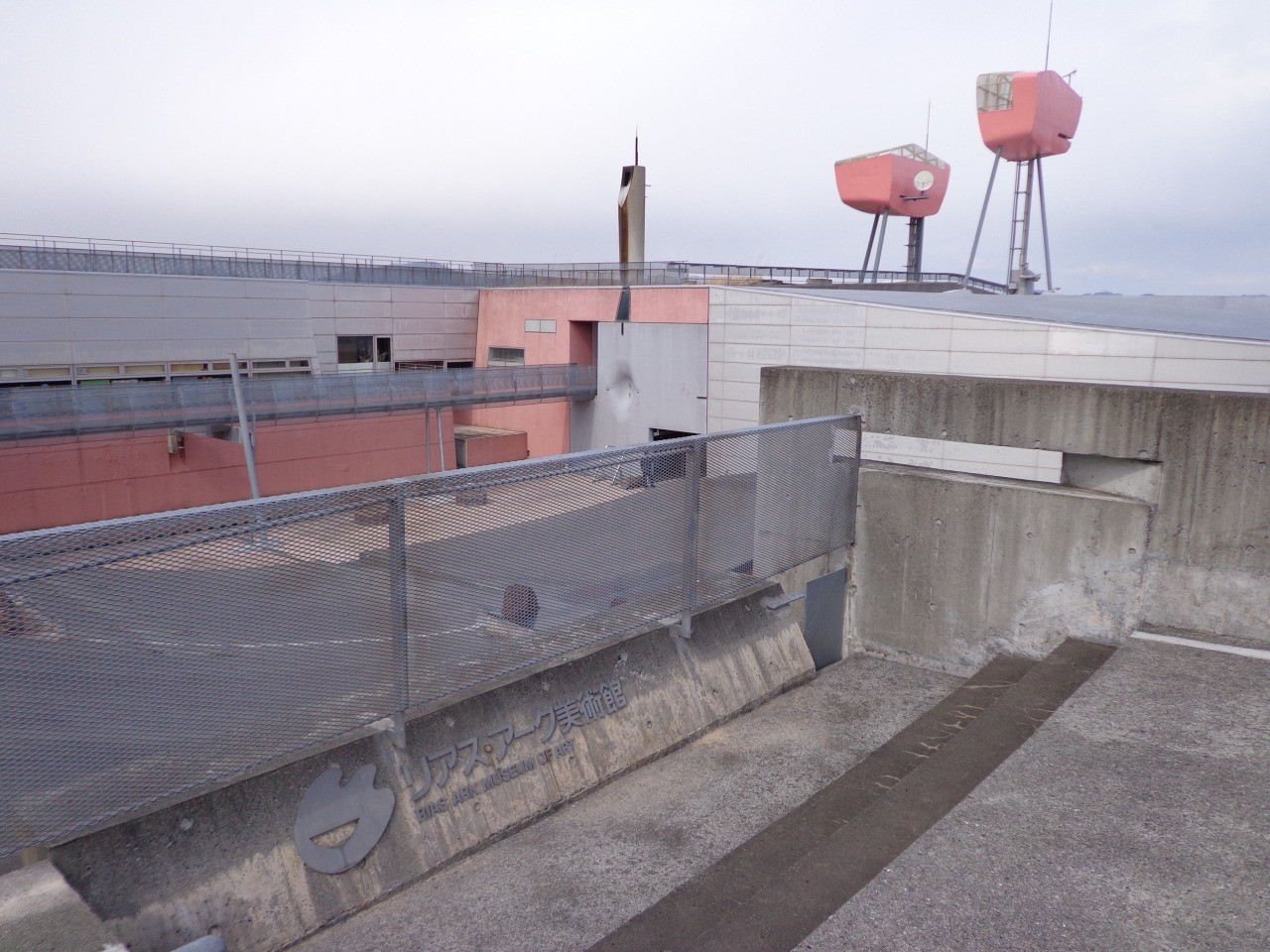Rias Ark Museum of Art
Rias Ark Museum of Art, which opened in 1994, is located 2.5 km southwest of the center of Kesennuma City, on a hill overlooking Kesennuma Bay.

This facility, which opened in 1994, is located 2.5 km southwest of the center of Kesennuma City, on a hill overlooking Kesennuma Bay. While principally showcasing contemporary art, the museum also houses a permanent exhibition of local historical and folk materials. Since 2006, the museum has been conducting cultural research on the history of the tsunami as part of local culture. The museum was damaged by the earthquake. Despite this, soon after the disaster, on March 23, 2011, museum staff started collecting over 30,000 photos of the devastation in total and collected 250 items left by the tsunami over a period of about two years. Approximately 500 items were carefully selected from these materials and put on permanent display in April 2013 as the “Documentary of the Great East Japan Earthquake and History of the Tsunami.” These debris from the disaster are not treated as “rubble” from the tsunami, but as debris that were once valued in people’s lives that tell stories of precious memories and feelings. For the Sanriku coastal area, the periodic occurrence of catastrophic tsunami is a vital element that shapes local culture, and through its exhibits, the art museum shows visitors how the region, its people, and natural disasters are always connected.[Languages: English]
• An English leaflet is available for “Documentary of the Great East Japan Earthquake and History of the Tsunami” and “Permanent Exhibition of Historical and Folk Materials.”
• An English guidebook is available for the “Documentary of the Great East Japan Earthquake and History of the Tsunami” exhibit.
• An English leaflet is available for “Documentary of the Great East Japan Earthquake and History of the Tsunami” and “Permanent Exhibition of Historical and Folk Materials.”
• An English guidebook is available for the “Documentary of the Great East Japan Earthquake and History of the Tsunami” exhibit.
- Address
- Telephone Number
- 0226-24-1611
- Opening Times
- 9:30 a.m. – 5:00 p.m. (last admission at 4:30 p.m.)
- Prices
- Free; fee charged to view permanent exhibition (see the facility’s website for details)
- Duration
- Notes